So here we are mid-summer, not much was happening in hockey, and I was missing the game. Since there wasn’t enough time to watch Canada Cup 1972 or 1987, I figured it would be smart to prepare for this year by putting the scouting hat back on, watch some nine-minute edits of several (10) of last season’s games while riding the assault bike. Watching as a scout versus as a fan means having a specific focus, as I want to learn and pass along as much as possible about what happened last season, and how it informs us about this coming season.
Now this won’t be in the 6000-word range like my last major scouting report for my last Junior team, however it is not short. Feel free to use the Ctrl-F shortcut on your keyboard to find your favorite player(s). And definitely check out the end of the article, as I’ve got something fun for everyone there.
Regardless of which team we’re discussing, the skillsets of players at this level are very, very similar. The most purely gifted teams do not always or even often win in this era, otherwise Colorado, Toronto, and Edmonton would have won the past six Stanley Cups instead of only one. It comes down to (coaching) systems and decision-making. Yes, the analytics and pro scouts inform those, however once the puck is dropped, whoever makes the best decisions, both on the bench and on the ice, will win.
With that said, let’s look at every returning Pittsburgh player, along with a couple of new ones.
Forwards
Sidney Crosby: Crosby’s backhand itself should be inducted into the Hockey Hall of Fame. In the first two games I saw, Crosby scored two backhand goals. Most players don’t score two backhand goals in a season! One was a true snipe, top shelf over the blocker of a moving goalie with a perfectly timed release to take advantage of the goalie’s lateral movement. The other was a quick backhanded snapshot under a shocked goalie who wasn’t expecting a shot that practically doesn’t exist to come off Crosby’s blessed blade.
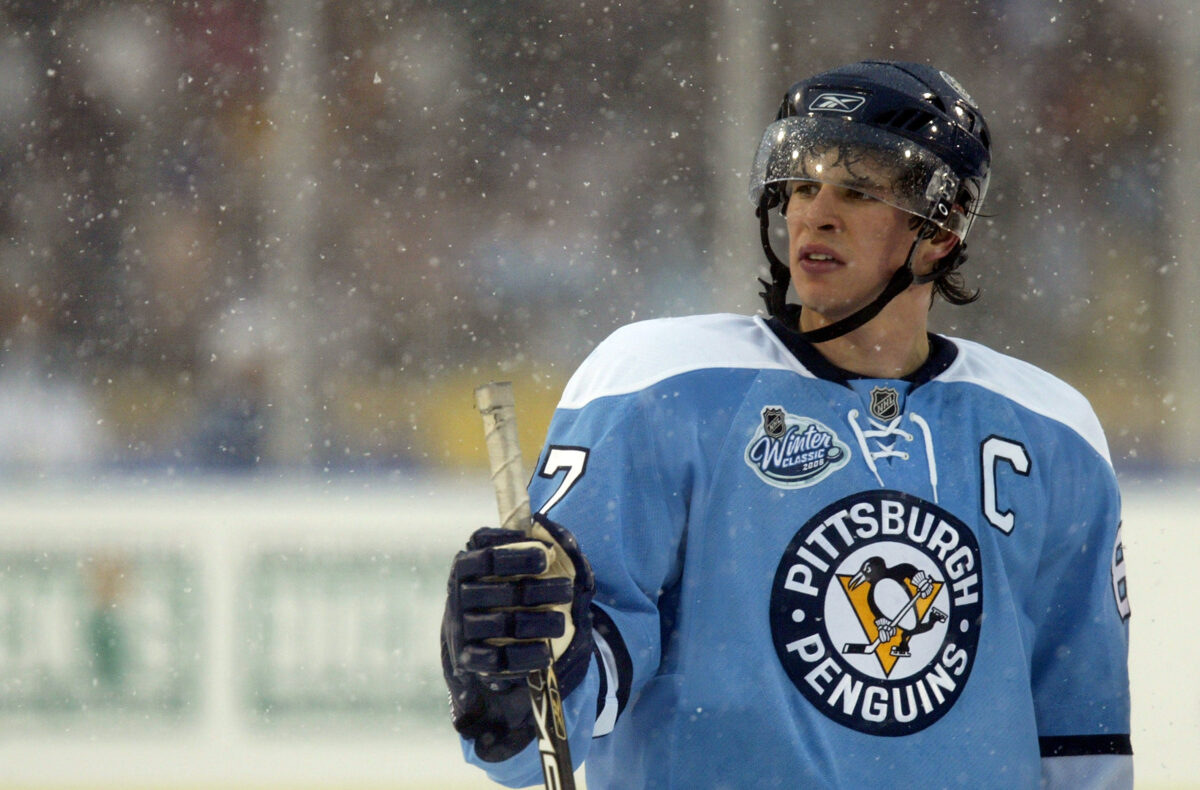
- While he doesn’t look quite as fast as he did back in 2008, Crosby can still read a play in the blink of an eye, find a seam, and get separation, which is how he scored both of those goals. One of the things that sets Crosby apart from others is that, while many players can create scoring chances, far less can finish them with any consistency. Crosby, 36, both creates and finishes those chances, which is why he had 33 goals and 93 points in 82 games last season.
- Crosby’s defensive play matches what the analytics say. It’s good, above average, however, he can still get beat and still be responsible for goals against. This is not likely to improve at this point in his career.
Jake Guentzel: For a first-line, star winger, he was not overly noticeable in most of the games I watched. Guentzel has a quality snapshot and one-timer from his off-wing. He drives the net well and doesn’t peel away once he gets close like many players do, which speaks to his fearlessness and why he is an effective goal scorer. He also provides a net-front presence on the power play, though as he is undersized, I am concerned about the longevity of his back. Also, he’s not a driver at all, he very much needs someone to create the play for him.
- Stats aside, I understand that last year wasn’t Guentzel’s best, so it’s not a surprise that he’s been invisible on many of these condensed games. If he and Rust are going to be on the same line, you need Rust to be more consistently engaged. It can’t be 87 carrying both players every night and the team expecting to win (it’s not 2009 anymore, and even then, Kunitz and Dupris carried their own water in their own very effective, Cup-winning way).
Bryan Rust: Rust’s biggest problem last season was consistent engagement. While I’d read repeatedly last season that he’d lost a step, the truth is that his wheels seem to show up, simply not consistently. He often got caught not moving his feet and took a penalty as a result. Teams that win consistently in both the regular season and playoffs do not take many of these types of penalties.
- Rust is a tale of two extremes in the game tapes. On one hand, he’ll have a burst out of nowhere, a great read-and-react where he creates and/or finishes a scoring opportunity. On the other side, he’ll stop moving his feet defensively and break out the Orville Redenbacher, watching as the other team scores close enough to him that he could have done something about it. The wheels are still there. What’s missing is a consistent commitment to the defensive side of the game. Consistency is greatness, and Rust needs to show up this year if Pittsburgh is to be a serious contender.
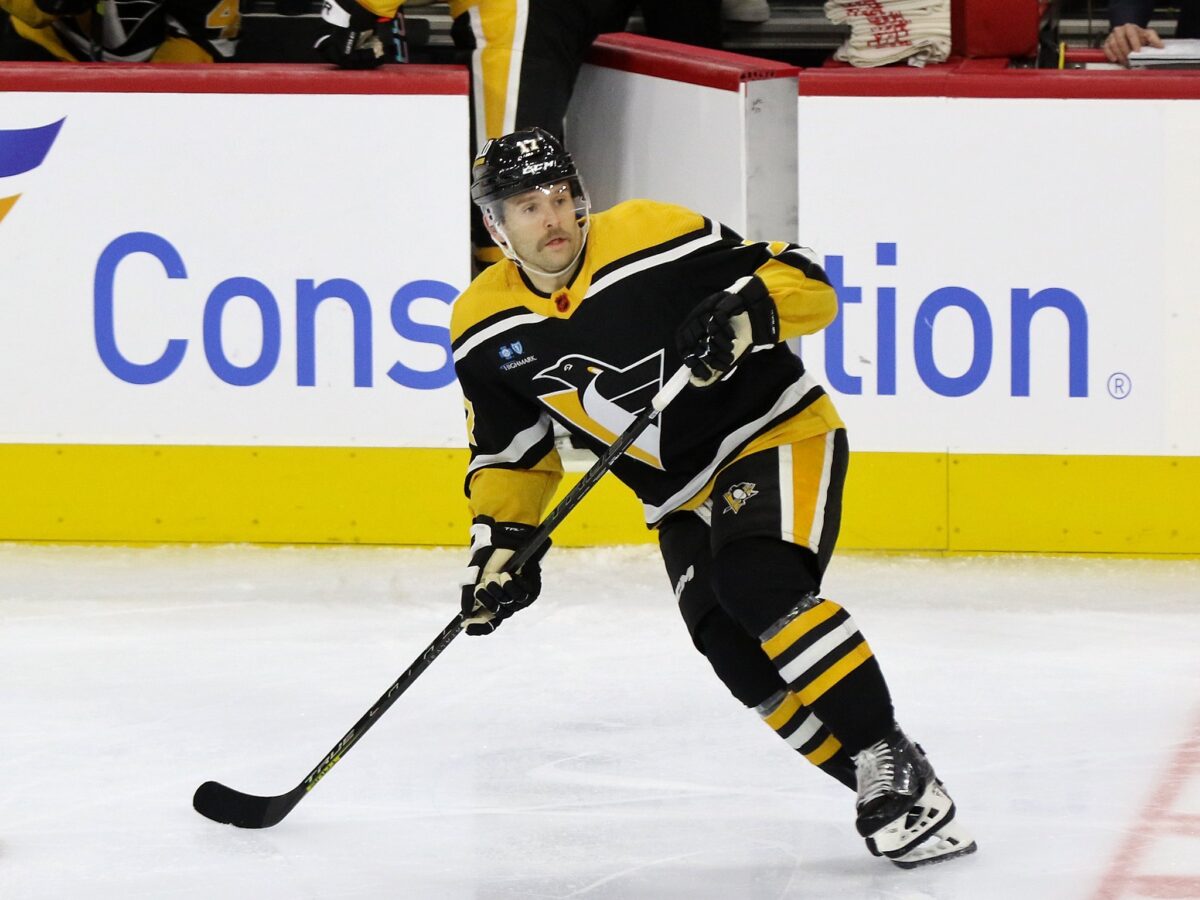
Evgeni Malkin: Malkin is a puck-driving offensive savant, even on borrowed time with those knees. His vision for what’s to come and ability to read the play is impeccable. In multiple games, Malkin created scoring chances by driving to the left around compromised defensemen. He seemed somewhat averse to contact though (unless the player was much smaller), and the pure sniping ability you can see is still in his mind did not translate to his hands or shot accuracy. His 27 goals on 240 shots (11.25%) last year is a clear downturn from his career 13.5% shooting percentage, and not likely to improve at age 37.
- What was also missing in Malkin was that horse-like power stride he used to have. Powerful in a way not unlike how Jaromir Jagr used to skate, Malkin is missing a couple of gears now, lost to time and the surgeon’s knife. It’s part of why I’d love to see him on the wing and not at center, however, that’s clearly not going to happen. Malkin has a lot of (hot take alert) John Tavares vibes, where he can still put up a point per game and affect the game offensively, however in this increasingly faster league, his speed limits him defensively and in his ability to win 50/50 battles across the ice. These issues become especially prevalent come playoff time when the game gets 20% faster and far heavier contact-wise.
Rickard Rakell: Ten games worth of watching tape and this is all I’ve got: Great shot, great ability to get open, clear chemistry with Malkin. Good skater. No feel for him defensively; that would have to change come playoff time. He’s not a driver, however, he is a pure finisher, someone teams need to win big games.
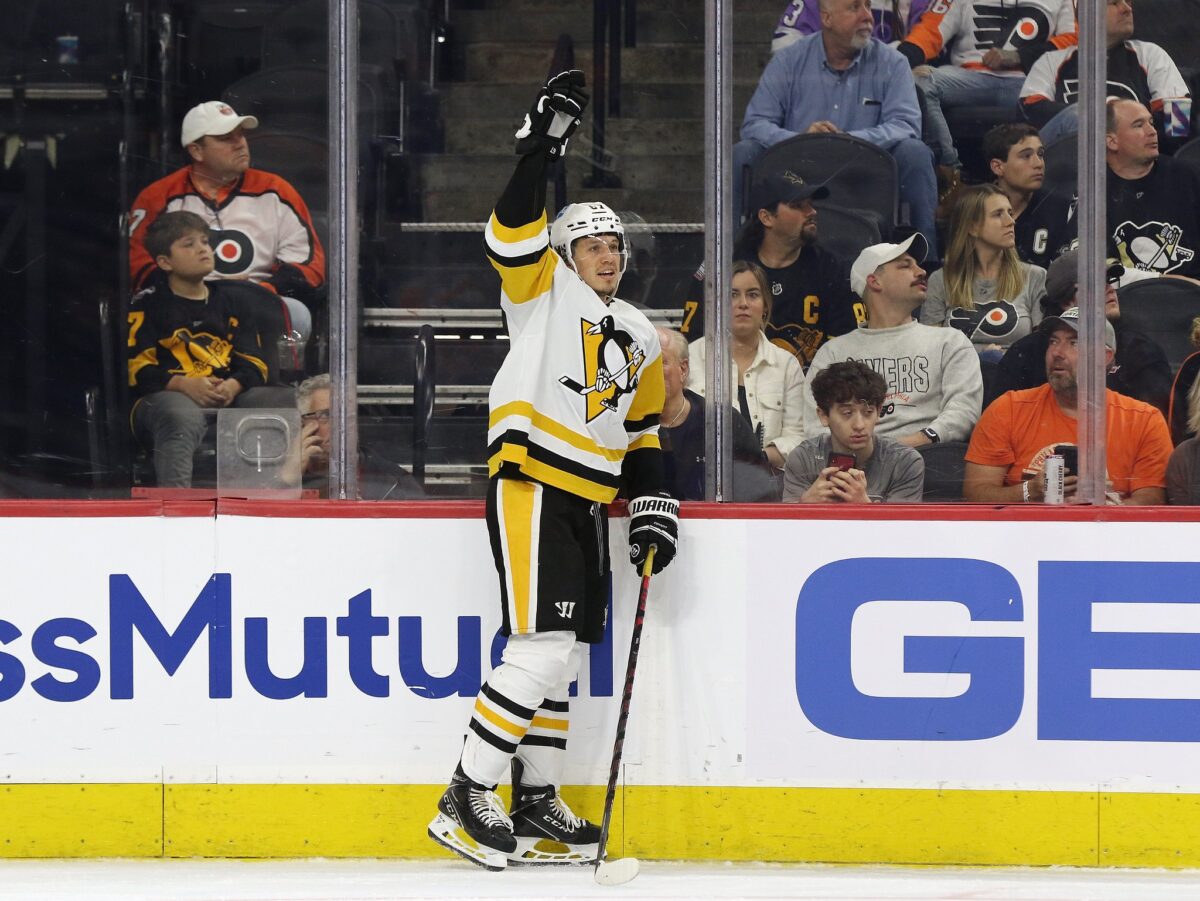
Reilly Smith (from his playoff games with Vegas Golden Knights): Solid top-six or top-nine forward (small flag that he doesn’t flash as an absolute top-six). Good skater who has some feistiness to his game. Good hands. Defensive value has been overblown, though as all the Vegas players showed, he sure can play in a shutdown system. I do wonder how much his chemistry with Jonathan Marchessault boosts his value, and if he can recapture that with Crosby early on, and Geno throughout the season.
Noel Acciari (watched all his Toronto regular season and playoff games): Huge fan of Acciari. He plays that game, the one that as a defenseman who has to go and pick up a dumped-in puck, you hate to play against. Oftentimes with five to nine legit, let-him-know-you’re-there hits per game is not uncommon for Acciari. He engaged far more often than he’s not, which you need to even get through the regular season and into the playoffs. He’s good defensively, and to top it off, he can score goals. He scores goals in the playoff goal zone, that five-to-seven-foot area around the front of the net where you pay the price to score a tip-in or rebound goal (which will one day be renamed Joe Pavelski Way). He’s that guy, and he will definitely sell jerseys at PPG Paints Arena.
Jeff Carter: The much-maligned Carter’s offensive instincts are still there and are still world-class. He has that Brett Hull-esque way of slowly sneaking into a scoring position undetected. Over the course of two games, Carter scored three goals this way, finding openings as defensemen went down low to challenge a puck carrier, and one-timing the puck past a laterally moving goalie trying to track the puck coming from behind the icing line.
- Carter’s main issue is his foot speed. There is none. His NHL 24 ranking for skating should be about 17. And honestly, he looks old, I mean his face, he looks tired. By comparison, it’s not the same look that Patrick Marleau had at the same age, and Joe Thornton only had that look at the very, very end. Offensive instincts notwithstanding, I expect Carter’s tank to run empty after game 41 this season.
Lars Eller: This signing, I don’t get it. He’s not fast enough to be a third-line center anymore, and he’s not going to impose his physical or intellectual will on a game. While he’s better defensively than Jeff Carter, one of the games I watched saw him getting beat into position by a Penguins’ forward who immediately scored a goal. It was a perfect microcosm of his limitations. He’s an average 4C with a known name playing for a true contender and will need to be upgraded.
Defensemen
Kris Letang: One of the games I watched was the contest against the Florida Panthers after Letang’s father had passed away a few days prior. Letang is fearless, both in his plan and frankly, the fact that he could rise to the occasion in the wake of such an emotional real-life situation. He had two goals, two assists, and the game-winning goal in overtime. He has fearless offensive creativity, driving offense from defense in a way that only a few others in the game can, even in his mid-30s. Frankly, it was more than incredible, it was inspiring. Kris Letang is someone that every human being can cheer for.
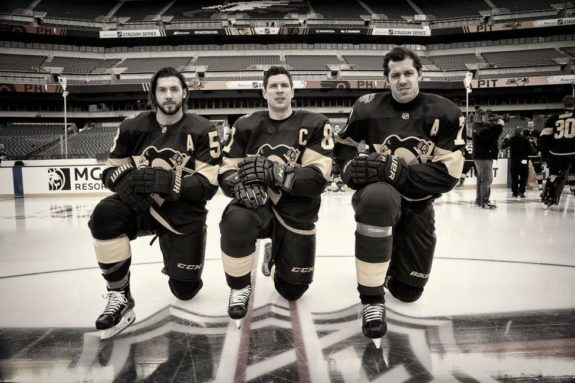
The Right-Handed Mishmash: Jeff Petry played a very, very high-event game. He was on for goals for, he was the cause of multiple goals against in multiple games. It’s not what you want out of a second-pair defenseman. His foot speed had been re-wrapped and sent back to Santa’s Village; he looked like he was in molasses. He was absolutely not the player of two seasons prior. If you’re going to have a high-event defenseman, you want someone who will be on the right side (pun!) of the scoring ledger, and that’s Erik Karlsson. Karlsson’s speed and fluidity will be a welcome contrast to Petry’s lack thereof, though Karlsson will certainly still have his defensive moments, as Penguins fans have grown accustomed to with Letang himself. A deeper look at the difference between Karlsson and Petry last year can be found here, where you’ll see that despite his defensive reputation, Karlsson’s analytics are far stronger than Petry’s. Karlsson wins virtually every category, and the ones he doesn’t win are only lost by a fraction of a percent.
Related: Pittsburgh Penguins Won Erik Karlsson Blockbuster Trade
Marcus Petterson: In the 10 or so games, I’ve noticed him being on for one goal against. That’s it. Overall, it was a great year for him, and no surprise that San Jose was rumored to be asking for him as part of the Karlsson trade. He is ultra-low event, stout defensively, the exact kind of player who Karlsson and Letang will both greatly enjoy playing with this year.
Pierre-Olivier Joseph: Joseph is a young defenseman in the NHL with top-four upside. Joseph is more offensively inclined, however, you can see enough defensive IQ for him to be a second-pair defenseman in his prime. He’s not there yet though, so on a team that’s trying to win, he needs protected minutes. Todd Reirden, the defensive-coaching savant who normally seems to bring out the best in defensemen, didn’t always protect Joseph. This is good on one hand for development, but it cost the team on more than one occasion late in the third period. Joseph is a good pincher; however, he needs to trust his team enough to sometimes dump the puck back in the corner and let them cycle rather than try to force a great play, especially in the third period when Pittsburgh has the lead.
Ty Smith: Caught some of Smith against last season’s historically inept Anaheim team. Smith walks the blue line with the puck on the power play with the level of skill necessary to quarterback a second power-play unit. He is a good skater with good vision and quick puck movement. It will be interesting to see how the extra year in the AHL, where he should have been playing 25 minutes a game and dominating, did for his development.
Chad Ruhwedel: A true seventh defenseman who may start the season as their number six because he’s right-handed. Hockey IQ is crucial to success, and his is limited. Offensive zone blueline positioning, he stands the way we did at 10 years old, hunched over, heavy on the stick, not ready to move. Our coaches taught us out of that so that we’d be mobile and able to read and react to the play. Ruhwedel can’t. In the defensive zone, he will over-commit to one play, leaving the puck carrier open to check down to his second option and make a play. If he plays over 40 games again next year, Pittsburgh will again be in trouble to make the playoffs.
Goalies
The departed Casey DeSmith was the goalie in virtually every game I saw, so I’ve got no real notes on Tristan Jarry. We all know the situation with Jarry – he’s athletic and talented, but can he stay healthy throughout the year and into the playoffs? By the end of the last game I watched of DeSmith, I fully believed that he could be a 1B in the NHL. If Pittsburgh could have replaced either Brian Dumoulin or Petry with a solid 3-4 defensive defenseman last season, they would have made the playoffs last year regardless, based on the back of DeSmith’s play throughout the season.
The Coaching Staff
The system that once won the Stanley Cup two years in a row didn’t work. The coaches couldn’t keep the noise from the general manager’s box out of the dressing room. The players played like the noise was weighing them down. This led to uninspired hockey, as was clear when they let a playoff spot slip out of their hands in the last month and week of the season.
Two questions spring to mind.
The first is, “Does Mike Sullivan still have the ears and hearts of this dressing room?”
The second, “Does Sullivan’s supposedly strong defensive system still work?”
Yes, he won two Stanley Cups, six years ago. Yes, he has the respect of the leadership group of the team. However, can Sullivan still drive this team to their singular goal of the Stanley Cup? There were issues with management last year, as management and the coaching staff were not on the same page. And through that, someone considered one of the best coaches in the game could not stop a team with multiple future Hall of Famers from having six wins and nine losses in the 15 games through game 81, costing Pittsburgh a playoff spot. Kyle Dubas did not hire Mike Sullivan, and while Dubas is a modern management type who can get along with people who are not his hires, he is as shrewd and ruthless as he needs to be in any situation.
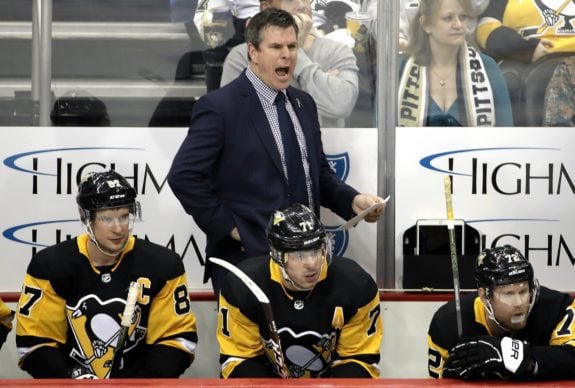
There are more issues, such as:
- Who is Pittsburgh’s great faceoff man?
- What is up with their penalty0killing units? There was a situation again late in the March 25 game, playing their arch-rivals who they know so well, on a PK situation late in the third period. Pittsburgh lost the faceoff clean, a quick cross-blueline pass went to Alex Ovechkin who was out wider than usual. Rust chased Ovechkin out to block the shot but also tried to account for the middle of the ice and not overcommit, which allowed Ovechkin to blast a one-timer past Casey DeSmith.
- A commonality among many of the Penguins’ goals against on the penalty kill is Rust. He’s fast and feisty, yes, but he seemed over-extended last year. He needs to be off the penalt kill, focusing solely on his first line and power play duties.
- How well will the defense gel?
- Will this imperfect bottom six be enough to make this team a real contender?
From a “We want to win the Stanley Cup” perspective, the most important takeaway from all of this is that the NHL is not only a game of inches, of having the best analytics staff, or best pro scouting staff. It is now a game won and lost by both coaching and hockey IQ. Coaching leads to systems; coaching leads to decision-making, both on the bench by the coaching staff and by the players, which shows the players’ decision-making under pressure. If the team is playing a strong system, your players will be in better positions to make plays. Once there, the player needs to make the right decision, knowing when to make the high-percentage play and when to chance the low-percentage play.
With the acquisition of Erik Karlsson and the remaking of both Pittsburgh’s bottom-six forwards and top-four defense, this team has high expectations. Expectations that are likely too high for this current incarnation. Should this season not start well through December, do not be surprised if tough decisions are made. As the adage goes, you can’t trade the entire team, but a head coach is very easy to get rid of.
Bonus: Hockey fans, if you haven’t seen season one of Shoresy, do yourself a favor and check it out. The best fictional take on hockey since Slap Shot, Shoresy is an insane, turned-up-to-ten illustration of life as a hockey player who’s not in “the show”. It’s on Crave in Canada and Hulu in the US, and the second season drops in late September in Canada and late October in the US. This is not a paid ad, simply a recommendation from one die-hard hockey fan to another. Shoresy will never lose again, and you’ll love the NOSHO.